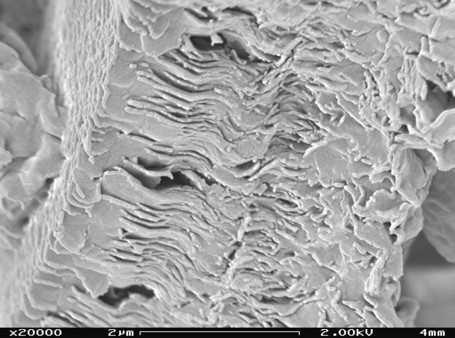return to Research Projects
Elucidating interlayer chemistry for design of novel, nontoxic organoclays for contaminant remediation
This work is supported by a grant from the National Science Foundation, Division of Chemistry
Contamination of environmental waters with organic chemicals poses a significant challenge to human and environmental health worldwide. Ubiquitous detection of industrial chemicals, pharmaceuticals, and personal care products, including endocrine disrupting chemicals, in treated wastewater receiving streams, groundwater, and drinking water wells reveals that conventional wastewater treatment processes do not fully remove these compounds.

This project seeks to better understand the chemistry of surfactant-modified clay minerals (organoclays) and to improve their efficacy for removing organic contaminants from environmental waters. We use multiple spectroscopic techniques (XRD, FTIR), sorption isotherms for select model contaminants, and additional characterization tools (TCN, GC/MS) to understand the variables that influence the chemical environment of the organoclay interlayer and, in turn, the magnitude of contaminant uptake into the clay. This understanding will enable the design of novel non-toxic organoclays. This project will enhance the fundamental understanding of the organoclay interlayer chemistry and our ability to control that chemistry to improve remediation of aqueous organic contaminants.
Using organoclays to remove organic contaminants from waste and environmental waters shows great promise as an effective and affordable approach. Montmorillonite clay modified with long-chain alkyl-ammonium cationic surfactants has been extensively studied and demonstrated to effectively sorb petroleum hydrocarbons, phenols, nitro- and chloro-substituted aromatics, PAHs and other organic pollutants from water. Although a good deal is known about the sorption mechanisms of contaminant uptake into the interlayer of organoclays, fundamental questions remain regarding the organoclay interlayer chemistry and how it can be used to optimize contaminant remediation. Moreover, the toxicity of conventional surfactants used in organoclays has not been addressed. This work will elucidate and apply critical organoclay chemistry to design effective, non-toxic organoclays that will help realize the potential of organoclays to promote human and environmental health.
